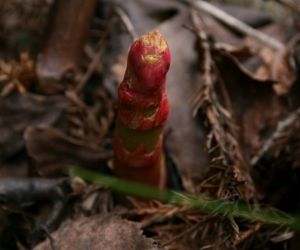As the UK’s most invasive plant enters its spring growth phase, Japanese Knotweed expert, Environet, reveals the latest Top Ten UK hotspots.
Data from its interactive online tracker,
Exposed: the Japanese Knotweed Heatmap, contains over 54,000 known infestations of Japanese knotweed and charts the spread of the plant across the UK. It found that Bolton, Bristol and St Helens in Merseyside are the top three worst affected locations.
Pushing up through cracks in concrete, driveways, patios, paths, drains and even the cavity walls of our homes, Japanese Knotweed can
reduce a property’s value by 10% and make it difficult to sell, unless a professional treatment plan is in place with an insurance-backed guarantee to satisfy mortgage lenders.
According to Environet’s research, approximately 5% of homes are currently affected, either directly or indirectly (neighbouring an affected property), knocking around £20 billion off UK house prices.
Exposed informs homeowners and potential homebuyers of the local presence of knotweed and the potential risk to their property. Users can enter a postcode to discover the number of reported knotweed sightings nearby, with hotspots highlighted in yellow or red.
The general public can also help in the fight against knotweed by reporting suspicious plants using the heatmap’s ‘Add Sighting’ feature and attaching a photo to be verified by experts.
The UK Japanese Knotweed hotspots for 2021
Position Location Infestations within 4km radius
1 Bolton, Greater Manchester 621
2 Bristol 465
3 St Helens, Merseyside 440
4 Cardiff, South Wales 419
5 Blackburn, Lancashire 406
6 Llanelli, South Wales 382
7 Swansea, South Wales 330
8 Rotherham, South Yorkshire 320
9 Shepherd’s Bush, West London 230
10 Nottingham 228
Nic Seal, Founder and MD of Environet, said: “Knowledge is power when it comes to Japanese Knotweed and this heat map is invaluable to homeowners and buyers who want to assess the risk in their local area.
With the stamp duty holiday extended and lockdown restrictions beginning to ease, the property market is busier than ever – but failing to carry out the appropriate checks for knotweed can turn out to be an expensive mistake.
“Despite its fearsome reputation, with professional help, the plant can be dealt with and the value of a property largely restored. I’d urge anyone buying or selling a property, or homeowners wishing to preserve the value of their home, to be vigilant for signs of spring growth and check Exposed to see whether they live in a high-risk area.”
Advice from the experts
With the property market under strain to close deals ahead of the Stamp Duty holiday, other industry experts have come together to warn home buyers of the hidden menace too.
Research in a 2020 Defra report revealed that only 3% of lenders were willing to provide a mortgage on residential properties with Japanese knotweed present. A further 38% were willing to lend subject to certain conditions, while 39% declared knotweed unacceptable and were unwilling to lend if it was present.
Partner and Head of Residential Property at Slater Heelis, Zara Banday outlined the legal position: “The responsibility lies with the sellers to complete a Property Information Form (TA6). Failure to report it or deliberately conceal Japanese Knotweed could lead to sellers being sued for misrepresentation and liable for compensation.
“The danger is that in a bid to secure a property ahead of the Stamp Duty holiday deadline, buyers don’t carry out the proper due diligence. Overlooking issues like knotweed could lead to delays, deals falling through or huge costs further down the line.
“My advice would be to view a property a number of times, check the boundary plan carefully, and liaise very closely with your surveyors so that issues like knotweed are spotted at the earliest opportunity. Ultimately, buyers need to be much more prudent on what is likely to be the biggest purchase of their life.”
David Layland, founding member of the Invasive Non-Native Species Association and joint MD of Japanese Knotweed Control – one of the UK’s first specialist remediation companies – said: “If knotweed is present on the land, it does not necessarily have to affect a sale. Having a proper remediation strategy in place with robust warranties and insurance can help demonstrate to solicitors, conveyancers and mortgage lenders that the knotweed issue is under control.”
Chris Ridehalgh, director at Organic Money, outlined the view from an insurance perspective: “We would always recommend carrying out a comprehensive inspection of the property before purchase. Presence of Japanese Knotweed should not lead to a home insurance refusal.
“Most insurance policies will not cover you for the treatment of knotweed; however, subsidence or damage caused to the property could be covered. Homeowners should be aware that failure to deal with Japanese knotweed could void any claims for building damage as well as leaving them exposed to a liability claim from a neighbouring property.”



